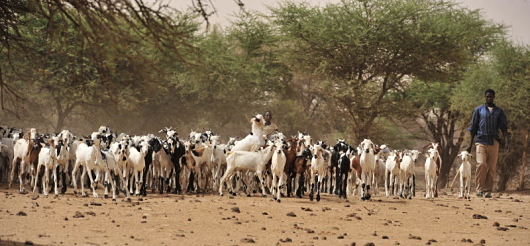Vast areas of the Maradi and Zinder regions of Niger were transformed from severely degraded farmland to agroforests through farmer-managed natural regeneration (FMNR). In the 1970s and 1980s, Maradi and Zinder faced an ecological crisis. Multiple droughts, rapid soil degradation, and famine left fuelwood, building materials, and fodder scarce, and...
With climate change impacts already felt in the world’s drylands, there is an urgent need for action, at various scales and initiated by different stakeholders, to ensure the sustainability of food production and livelihoods in these regions in the coming decades. There is also the need to rapidly establish baselines,...
Sustainable land management in practice: guidelines and best practices for sub-Saharan Africa
13 November 2015
13 November 2015
These guidelines and case studies are intended to help create a framework for investment related to SLM in SSA. The particular aim of these guidelines is to identify, analyse, discuss and disseminate promising SLM practices - including both technologies and approaches - in the light of the latest trends and...
Where the land is greener: case studies and analysis of soil and water conservation initiatives worldwide
13 November 2015
13 November 2015
The WOCAT book "where the land is greener - case studies and analysis of soil and water conservation initiatives worldwide" has been published in 2007.
It contains an extensive range of case studies from around the world: 42 soil and water conservation technologies and 28 approaches in total; provides a detailed...
The objective of this thematic study is to review and analyse current practices in ecosystem restoration, with a particular focus on the use of native tree species and genetic considerations related to the selection of appropriate planting material.
Based on this analysis we put forward a number of practical recommendations, including...
Building Resilience to Climate Change through Farmer-managed Natural Regeneration in Niger and Land Rehabilitation in Burkina Faso
12 November 2015
12 November 2015
This case study examines adaptation measures that have been implemented in the Sahel region since the 1980s, including farmer?managed natural regeneration (FMNR). In Burkina Faso, efforts have been implemented to rehabilitate barren crusted land using contour bunds and improved planting pits. These simple techniques have served to increase the volume...
Water shortage, deforestation and development: South Africa’s Working for Water programme
12 November 2015
12 November 2015
In the post-apartheid era, South Africa is experiencing a serious water supply crisis as demand increases both from rural areas and rapidly growing towns and cities. New dams and water transfer schemes are are being constructed but they are both controversial and unlikely to fully satisfy demand. Alien species of...
Dry land tree management for improved household livelihoods: farmer managed natural regeneration in Niger
12 November 2015
12 November 2015
Farmer Managed Natural Regeneration (FMNR), a set of practices farmers use to foster the growth of indigenous trees on agricultural land, has drawn substantial attention as a contributing factor to a trend of increasing vegetation greenness in the Republic of Niger. This paper identifies drivers of FMNR adoption and assesses...
Mauritania is one of the Sahelian countries most severely affected by the repeated periods of drought that have been occurring since the end of the 1960s. Desertification control has always been a national priority and a central concern of successive governments, taking the practical form of various development plans and...
This book is an excellent compendium of case studies and analysis, which will be of interest and use to people who wish to move forest landscape restoration forward, no matter what country they operate in.
Practitioners and policy-makers working on forest landscape restoration are learning all the time, through experience, and...

